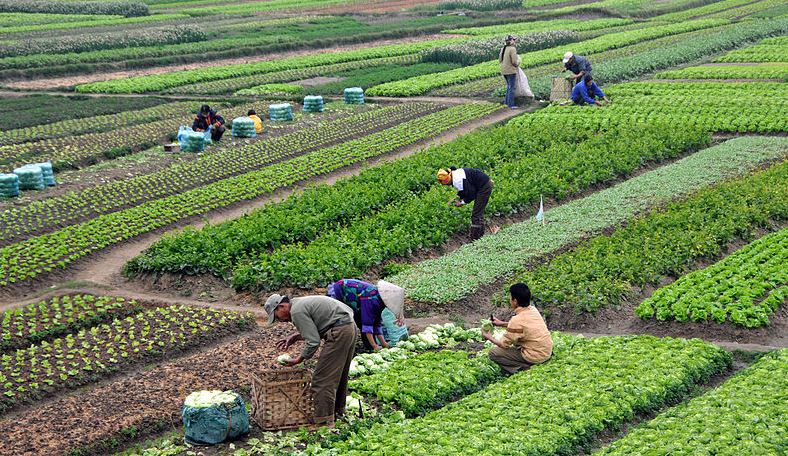Table of Contents
Land Reforms in India (Short Notes) | UPSC – IAS
Land reform involves the changing of laws, regulations or customs regarding land ownership. Land reform may consist of a government-initiated or government-backed property redistribution, generally of agricultural land.
There are four main categories of reforms:
- Abolition of intermediaries (rent collectors under the pre-Independence land revenue system);
- Tenancy regulation (to improve the contractual terms including security of tenure);
- A ceiling on landholdings (to redistributing surplus land to the landless);
- Attempts to consolidate disparate landholdings;
Land distribution has been part of India’s state policy from the very beginning. Independent India’s most revolutionary land policy was perhaps the abolition of the Zamindari system (feudal landholding practices).
Objectives of Land Reforms | UPSC – IAS
Land-reform policy in India had two specific objectives:-
- The first is to remove such impediments to increase in agricultural production as arise from the agrarian structure inherited from the past.
- The second objective, which is closely related to the first, is to eliminate all elements of exploitation and social injustice within the agrarian system, to provide security for the tiller of soil and assure equality of status and opportunity to all sections of the rural population.
Other Significant Objectives of Land Reforms
The other important objective of land reforms in India is to make provision for more rational use of scarce land resources. It can be done by changing the conditions of holdings, ceilings on land holdings. This helps cultivation process in a most economical manner without any wastage of land, labour and capital.
- Abolition of Intermediaries
- It was to be done so that ownership of land can be clearly identified with management and operation of land. The owner himself should operate and manage the land.
- Land ceilings
- To meet the land hunger of working cultivators.
- To reduce disparity in agricultural incomes in ownership and in the use of land.
- To increase employment opportunities in the rural sector.
- Consolidation of holdings
- For more efficient management.
- Encouragement of co-operative joint farming
- To overcome the difficulties presented by tiny holdings.
- Larger financial resources could be invested and employment opportunities increased.
- Settlement and Regulation of tenancy
- To confirm the rights of occupancy of tenants, secure their possession of tenanted land and also rents on leased land.
History of Land Reforms | UPSC – IAS
- Since its independence in 1947, there has been voluntary and state initiated/mediated land reforms in several states with dual objective of efficient use of land and ensuring social justice.
- The most notable and successful example of land reforms are in the states of West Bengal and Kerala. Other than these state sponsored attempts of reforming land ownership and control, there was another attempt to bring changes in the regime which achieved limited success; famously known as Bhoodan movement (Government of India, Ministry of Rural Development 2003).
- Some other research has shown that during the movement, in Vidarbha region, 14 percent of the land records are incomplete, thus prohibiting transfer to the poor. 24 percent of the land promised had never actually become part of the movement. The Gramdan which arguably took place in 160,000 pockets did not legalise the process under the state laws
At the time of independence
- Ownership of land was highly concentrated
- Landlords used to extract maximum rental from tenants
- Tenants were left with no money after paying the rental and thus made no effort to develop agriculture
- They had neither resource nor knowledge
- Land was not organized and thus number of small fragments existed
- Often cultivators were shifted from one farm to another by landlords on their whims and fancies.
- Cultivators often had to supplement their farm income by working as hired laborers like their poorer landless counterparts.
Women and Land Reforms | UPSC – IAS
In all Government land transfers, women’s claims should be directly recognized.
- According to the new policy, all new land distribution among landless poor families will be in women’s name.
- In all land distribution schemes (land related to surplus land, custodial land, or under the land ceiling act), the land should be distributed to rural landless women workers.
- The policy recommends 50 percent of land holdings given to forest communities should go to women.
- Under the policy, elderly women and widows too would gain title to land.
- The policy advises the states to consider the adoption of a group approach in land cultivation. Thus, group titles to women’s group should be granted.
- The policy also asked the state to assess all uncultivated arable land with the Government, and give women’s groups such land in the long term for group cultivation.
- Women constitute nearly 40 percent of the agricultural workforce in the country. More importantly, 75 percent of all female workforce and 85 percent of all rural female workforce in the country at present, was involved in agriculture.
In recent days, rural households are increasingly becoming female headed households, due to widowhood, desertion, or male out-migration.
- The Eleventh Five Year Plan recognised that agricultural productivity was increasingly getting dependent on the ability of women to function effectively as farmers and strongly, and had also made a recommendation to ensure effective and independent land rights for women.
- The Twelfth Five Year Plan emphasised enhancing women’s land access from all three sources – direct government transfers, purchase or lease from the market and inheritance.
- The land rights can serve multiple functions in rural women’s lives and would empower them to challenge the socio-economic and political inequalities prevalent in the rural-semi feudal society











